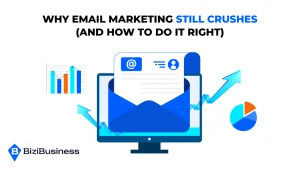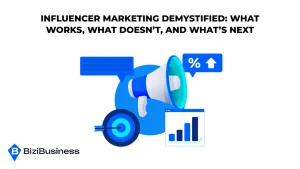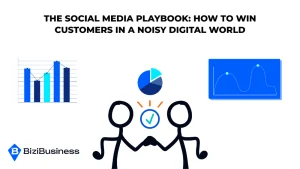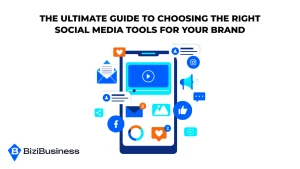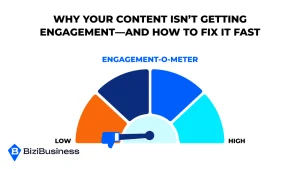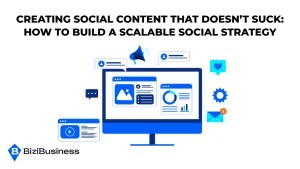BiziTopics
How to Create Audio Ads That People Actually Want to Hear
BiziBusiness
Jul 8, 2025
25 min read
Audio ads are everywhere these days—on podcasts, music streaming services, smart speakers, and even digital radio.
But let’s be honest: Most people skip or tune out audio ads because they sound forced, repetitive, or just plain annoying.
The challenge is clear: How do you create audio ads that people actually want to hear?
It’s not just about getting your message across—it’s about doing it in a way that feels natural, engaging, and relevant.
Why Audio Ads Are Different from Visual Ads
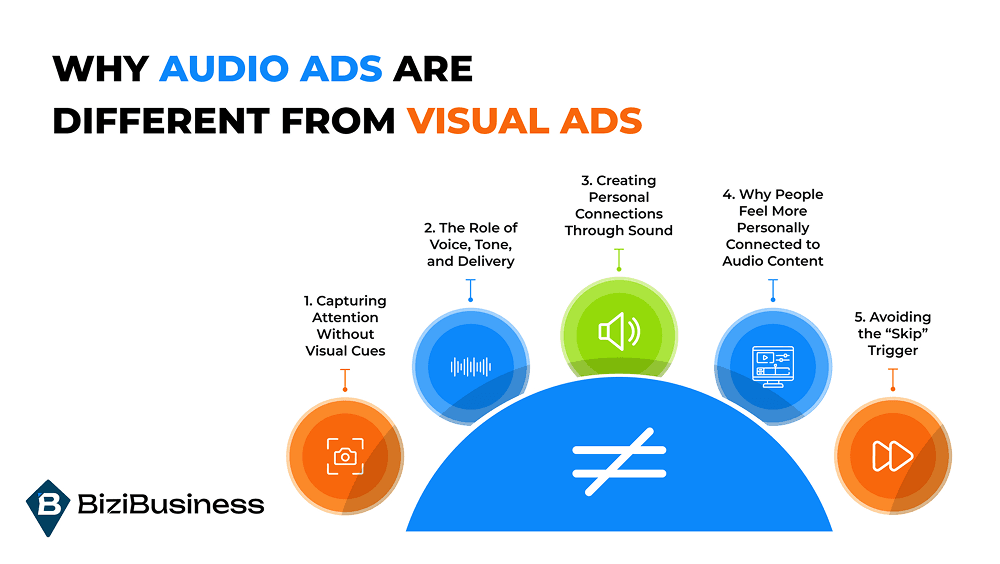
Audio ads are fundamentally different from visual ads because they rely entirely on sound to convey your message.
Unlike visual ads, where images or videos grab attention instantly, audio ads need to hook the listener through voice, tone, and sound design.
Why does this matter?
If your ad doesn’t catch someone’s attention within the first few seconds, they’ll either skip it or mentally tune out.
Understanding these differences helps you create ads that stand out without being intrusive.
1. Capturing Attention Without Visual Cues
In a visual ad, an image or video can instantly grab attention.
But with audio ads, you only have sound to make an impression.
This makes your opening line and tone critically important.
What Works:
- Strong Opening: Start with a catchy phrase or intriguing question.
- Distinctive Voice: Choose a voice that aligns with your brand—friendly, authoritative, or relatable.
- Sound Design: Use music or effects to set the mood, but don’t overwhelm the message.
2. The Role of Voice, Tone, and Delivery
Your voice choice isn’t just about clarity—it’s about creating an emotional connection.
Since audio lacks visual context, your tone must convey trust, excitement, or calm depending on your goal.
What Works:
- Conversational Delivery: Sounding like a friend rather than a salesperson.
- Authenticity: Avoid overly scripted or robotic-sounding voices.
- Pacing: Maintain a natural rhythm—neither rushed nor drawn out.
- Emphasis: Use vocal inflections to highlight key points.
3. Creating Personal Connections Through Sound
One reason audio content feels personal is that listeners often consume it through headphones or speakers in intimate settings.
Your ad needs to feel like a one-on-one conversation, not a generic broadcast.
What Works:
- Direct Address: Use “you” to make it feel personal.
- Relatable Scenarios: Mention common situations your audience faces.
- Soundscaping: Use subtle background sounds that match the context (like a coffee shop ambiance for a cafe ad).
4. Why People Feel More Personally Connected to Audio Content
Audio content often becomes part of someone’s routine—whether it’s a podcast during a morning run or music on the commute.
Unlike visual ads, audio ads feel more immersive because they accompany daily activities.
How to Leverage This:
- Context-Aware Ads: Acknowledge the context, like saying, “While you’re on your way to work…”
- Seamless Integration: Make the ad feel like a natural extension of the content.
- Respect the Experience: Avoid jarring sounds or overly loud intros.
5. Avoiding the “Skip” Trigger
Many audio platforms allow users to skip ads, especially on streaming services or podcasts.
The challenge is to make your ad compelling from the very first second.
What Works:
- Unexpected Statements: Start with something intriguing or surprising.
- Short and Sweet: Keep the message concise to respect listeners’ time.
- Host-Read Ads: When podcast hosts deliver ads in their own voice, they sound more genuine and less like interruptions.
Understanding Your Audience: What Do They Want to Hear?
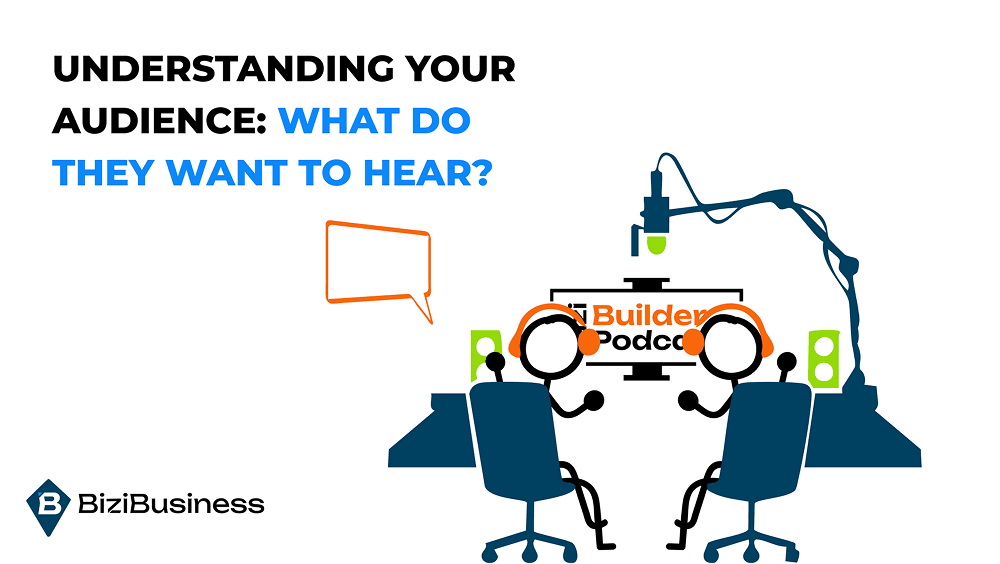
Your ad should sound like it’s speaking to them—not at them.
The most successful audio ads don’t just broadcast a message—they connect with listeners.
To make that connection, you need to understand who your audience is, what they care about, and how they consume audio content.
Let’s look at how to tailor your audio ads to fit your audience’s preferences and context.
1. Start with Data: Know Your Listener Demographics
Before you create your ad, gather insights into your audience’s:
- Age and Gender: Helps set the tone and language.
- Interests: Guides content and themes.
- Listening Habits: Are they podcast fans, music streamers, or radio listeners?
- Preferred Platforms: Spotify, Apple Podcasts, Pandora, etc.
2. Tap into the Psychology of Listening: Why Audio Feels Personal
People form strong connections with voices.
When a podcast host they trust promotes a product, listeners feel like they’re hearing a friend’s recommendation.
Understanding this psychology helps you create ads that feel genuine and conversational rather than disruptive.
3. Align Your Message with Their Lifestyle
The content of your audio ad should reflect what your audience cares about and how they live their lives.
Think about their daily routines, hobbies, and challenges.
4. Understand the Listening Context: Where and When
Where and when your audience listens affects how they perceive your message.
Is it during a workout? On a morning commute? While winding down at night?
5. Speak Their Language: Match Your Brand Voice to Their Expectations
The tone of your ad should match not only your brand but also the audience’s expectations.
If your brand is playful, keep the tone light and witty.
If it’s professional, opt for a more authoritative and clear approach.
6. Personalization: Make It Feel Custom-Made
Whenever possible, tailor your ad to the platform, podcast, or even the listener.
If your ad is on a podcast, consider having the host read it to maintain that personal connection.
Key Elements of an Engaging Audio Ad
Crafting audio ads that listeners actually enjoy—and remember.
Creating an effective audio ad isn’t just about getting your message across.
It’s about doing it in a way that feels natural, relevant, and worth listening to.
Whether your ad is 15 seconds or a minute long, every second counts.
1. Clear and Catchy Opening: Hook Them Instantly
The first few seconds of your audio ad are crucial.
Listeners decide almost immediately whether they’re interested or not.
Start with something bold, intriguing, or relatable to make them want to hear more.
What Works:
- Unexpected Questions: “Ever wondered why your coffee never tastes the same at home?”
- Bold Statements: “You’re wasting money on skincare—and here’s why.”
- Curiosity Triggers: “Here’s a simple way to save $100 this week.”
- Direct Address: “Hey, morning joggers—got a minute?”
2. Authentic Voice: Sound Human, Not Scripted
People connect with voices that feel genuine and relatable.
If your ad sounds overly rehearsed or robotic, it breaks that connection.
Use a voice that matches your brand’s personality and tone.
Tips for Choosing the Right Voice:
- Relatability: Choose someone who sounds like your target audience.
- Natural Cadence: Avoid overly dramatic or exaggerated tones.
- Appropriate Accent: Match the regional or cultural context when relevant.
- Professional Yet Friendly: Avoid sounding too corporate or overly casual.
3. Relevant Message: Make It Worth Their Time
Listeners are more likely to stay tuned if they feel your ad speaks directly to them.
Focus on one key message and make sure it’s relevant to their needs or interests.
How to Keep It Relevant:
- Address a Problem: “Struggling to stay hydrated? We’ve got a solution.”
- Offer a Benefit: “Save time on meal prep with our ready-to-cook kits.”
- Use Real Scenarios: “Stuck in traffic? Here’s something to make your drive better.”
- Tailor to Context: Mention the platform or content they’re currently listening to.
4. Memorable Sound Design: Enhance, Don’t Overwhelm
Sound elements can elevate your ad from bland to captivating—if used correctly.
Background music or sound effects should complement the voice without overshadowing it.
Sound Design Tips:
- Subtle Music Beds: Keep it light and let the voice remain dominant.
- Purposeful Sound Effects: Only use sounds that enhance the message.
- Volume Balance: Make sure background sounds don’t drown out the narration.
- Branded Audio Cues: Consider a signature sound or jingle that becomes recognizable.
5. Simple and Direct Call to Action (CTA): Inspire Action
Your ad should have a clear goal—whether it’s visiting your website, signing up for a trial, or using a promo code.
Make the CTA simple, actionable, and easy to remember.
CTA Tips:
- Keep It Short: “Visit us online” or “Download the app now.”
- One Action Only: Don’t confuse listeners with multiple requests.
- Memorable Phrasing: Use catchy, rhythmic wording if possible.
- Mention the Benefit: “Save 20% today when you sign up.”
6. Length and Pacing: Respect Their Time
The ideal length of an audio ad depends on the platform:
- Spotify/Streaming Ads: 15-30 seconds
- Podcast Ads: 30-60 seconds
- Radio Spots: 15-60 seconds
Pacing Tips:
- Don’t Rush: Make every word clear and easy to follow.
- Natural Flow: Pauses and breaths make the message sound conversational.
- Adjust for Platform: Keep pre-roll ads shorter since listeners haven’t settled in yet.
- Avoid Overloading: Don’t cram too much information into a short ad.
Crafting Audio Ads That Don’t Annoy Your Audience
One of the biggest challenges with audio ads is that they can easily come across as intrusive or disruptive.
Annoying ads can harm your brand’s reputation and lead to negative associations.
If listeners feel annoyed, they’ll either skip the ad (if possible) or mentally tune out.
On the other hand, a well-crafted ad can feel like a helpful recommendation rather than a hard sell.
The goal is to create ads that sound natural, relatable, and engaging—not like an unwanted commercial break.
Here’s how to make sure your audio ads hit the right note.
Keep It Short and Sweet: Don’t Drag It Out
One of the quickest ways to lose your audience is by making your ad too long or overly detailed.
Short ads are easier to digest and less likely to feel like a burden.
People are likely multitasking while listening, so they won’t have the patience for drawn-out messages.
Use a Conversational Tone: Avoid Sounding Robotic
Nothing turns listeners off faster than an ad that sounds scripted or artificial.
People want to hear real voices that sound like someone talking to them—not at them.
A conversational tone makes listeners feel like they’re hearing a recommendation from a friend rather than a sales pitch.
How to Keep It Conversational:
- Natural Phrasing: Use everyday language and contractions.
- Speak Directly: Use “you” and “your” to make it personal.
- Match the Context: If it’s a casual podcast, keep the tone light and friendly.
- Host-Read Ads: When possible, have podcast hosts deliver the message.
Balance Volume and Tone: Don’t Blast Their Ears
Audio ads that suddenly increase in volume or use jarring sound effects can feel aggressive and unpleasant.
Your ad should be consistent with the volume and tone of the content it’s paired with.
A soft, calm voice saying, “Need a break? Take a moment with our soothing herbal tea,” over gentle, ambient music.
When the audio levels feel natural and balanced, the ad blends into the listening experience rather than interrupting it.
Avoid Aggressive or Pushy Language
People dislike ads that come off as desperate or overly sales-driven.
Instead of pushing your product, focus on how it can genuinely improve their life.
What to Avoid:
- Hard Sells: Phrases like “Buy now!” or “Don’t miss out!” can feel forceful.
- Fear-Driven Messages: Avoid creating a sense of panic or urgency.
- Overpromising: Claims that sound too good to be true will backfire.
What to Do Instead:
- Offer Help: “Looking for a better night’s sleep? We’ve got you covered.”
- Suggest Solutions: “Feel more refreshed with our energy-boosting drinks.”
- Keep It Low-Pressure: “Curious? Check out our new collection when you’re ready.”
Example:
“Sometimes, you just need a little extra energy to get through the day. That’s why we created Boost Bar—your go-to for a natural pick-me-up.”
Add a Human Touch: Avoid Sounding Too Corporate
People often connect better with human stories and real-life scenarios.
Instead of corporate jargon, use simple, relatable language that makes your brand feel more approachable.
Humanizing your ad builds empathy and trust, making people more receptive to your message.
How to Add a Human Element:
- Share Real Stories: “When Sarah started using our planner, her days got way more organized.”
- Be Honest: Acknowledge common problems rather than pretending your product is perfect.
- Include Testimonials: Let real users speak about their experience.
- Show Personality: Use humor or light-hearted remarks when appropriate.
Example:
“We get it—some days are just harder than others. That’s why our coffee is always brewed strong—just like you.”
Respect Their Time: Know When to Stop
If your ad appears too frequently, it can create ad fatigue.
Limiting exposure ensures your ad stays fresh and relevant rather than feeling like an unavoidable nuisance.
Set frequency caps and rotate your creative to keep it from feeling repetitive.
Tips for Frequency Management:
- Rotate Ads: Use a few variations to avoid repetition.
- Cap Impressions: Limit how often the same person hears your ad in a short period.
- Update Seasonally: Refresh your ad copy and sound design periodically.
Types of Audio Ads That Work
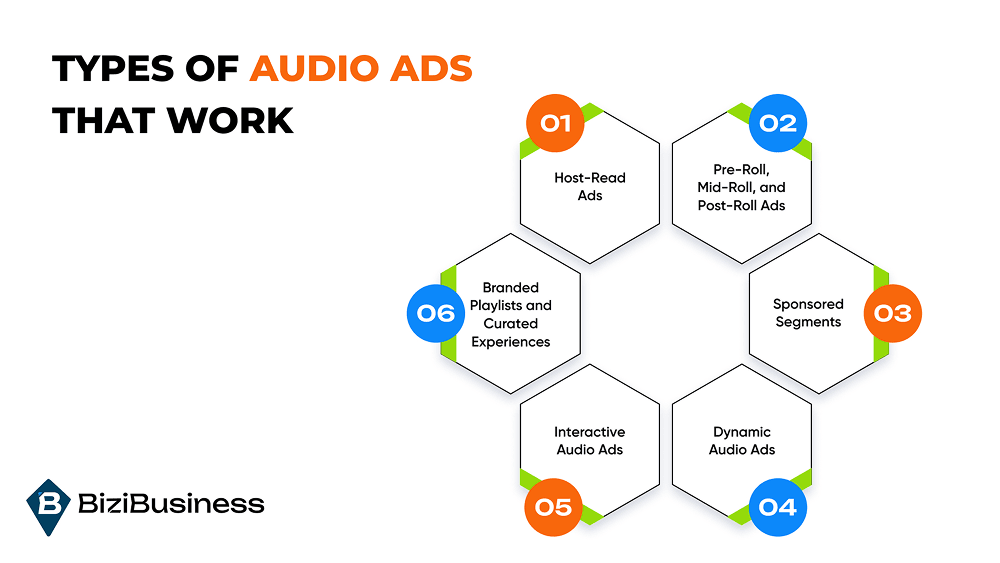
Different formats for different contexts—choose the right one for your audience.
Audio advertising has evolved far beyond traditional radio spots.
With the rise of podcasts, music streaming, and smart speakers, there are now multiple ways to reach listeners.
Choosing the right type of audio ad is essential for maximizing engagement and impact.
1. Host-Read Ads: Leverage Trust and Authenticity
These ads are read directly by the host of a podcast or radio show.
They feel genuine and conversational, as they come from someone the audience already trusts.
Best For:
- Podcasts: Especially when the host has a strong connection with their listeners.
- Niche Audiences: When you need to build credibility quickly.
- Lifestyle Brands: Products or services that align with the host’s personal experiences.
Why It Works:
- Listeners feel like the host is personally recommending the product.
- The ad blends seamlessly with the content, reducing the likelihood of skipping.
- Hosts can add their own personal anecdotes, making the ad feel more authentic and relatable.
2. Pre-Roll, Mid-Roll, and Post-Roll Ads: Strategic Placement Matters
These ad types are determined by where they appear in the audio content:
- Pre-Roll: Before the content starts.
- Mid-Roll: During a natural break.
- Post-Roll: After the content ends.
Best For:
- Podcasts: Where listeners are engaged and invested.
- Music Streaming: Between songs to maintain a smooth experience.
- Digital Radio: During breaks in programming.
Why It Works:
- Pre-Roll: Great for brand awareness—listeners haven’t tuned out yet.
- Mid-Roll: Higher retention since listeners are already engaged.
- Post-Roll: Best for call-to-action messages, as only the most dedicated listeners will hear it.
3. Sponsored Segments: Seamlessly Integrating the Brand
Rather than a standalone ad, sponsored segments are woven into the content itself.
It feels more like a natural part of the episode rather than a separate ad break.
Best For:
- Talk Shows and Interviews: Where brand mentions can be part of the conversation.
- Educational Podcasts: Integrating the product into a related topic.
- Lifestyle Content: Where the product fits into the host’s routine.
Why It Works:
- Feels integrated and genuine rather than forced.
- Offers more time to explain the product compared to short ad spots.
- Reduces ad fatigue since it doesn’t feel like an interruption.
4. Dynamic Audio Ads: Real-Time Personalization
These ads change based on user data such as location, time of day, or listening habits.
They feel highly relevant and can adapt to the listener’s current context.
Best For:
- Music Streaming Services (Spotify, Pandora): Targeting based on mood or activity.
- Smart Speaker Ads: Tailoring messages to local weather or events.
- Podcast Networks: Adjusting ads based on user demographics.
Why It Works:
- Personalization makes listeners feel more connected to the message.
- Real-time updates keep content fresh and relevant.
- Increases engagement since the ad feels custom-made for the listener.
5. Interactive Audio Ads: Encourage Listener Engagement
These ads invite listeners to interact directly—for example, by asking them to respond or take a specific action.
They are often used on smart speakers like Alexa or Google Home.
Best For:
- Smart Speaker Campaigns: Voice-activated interactions.
- Interactive Radio: Where users can respond using voice commands.
- Personalized Offers: Prompting users to request more information or make a purchase.
Why It Works:
- High Engagement: Listeners are more likely to remember an ad they actively responded to.
- Data Collection: Gathers insights on listener preferences.
- Brand Recall: Interactive elements make the experience more memorable.
6. Branded Playlists and Curated Experiences: A Subtle Approach
Rather than a direct ad, your brand sponsors a playlist or curated audio experience.
Listeners choose these playlists voluntarily, which reduces the intrusiveness of traditional ads.
Best For:
- Music Streaming Platforms: Like Spotify or Apple Music.
- Mood or Activity-Based Playlists: (e.g., workout, relaxation, or focus playlists).
- Brand Awareness: Associating your brand with specific moods or themes.
Why It Works:
- Opt-In Experience: Listeners feel in control.
- Soft Branding: The brand name is present without being overtly promotional.
- Longer Engagement: Listeners typically enjoy multiple tracks within the playlist.
Choosing the Right Platforms for Your Audio Ads
Running audio ads on the wrong platform can feel out of place and waste your budget.
The effectiveness of your audio ad campaign isn’t just about the content—it’s also about where you place it.
Different platforms have different audiences, ad formats, and engagement levels.
Choosing the right platform helps you make sure your message reaches the right people at the right time.
Aligning your ad strategy with the platform’s strengths ensures a natural fit and better engagement.
Here are the most popular platforms for audio ads and how to use each effectively.
1. Podcasts: Building Trust with Niche Audiences
Podcasts are one of the most trusted and intimate audio formats.
Listeners often develop a connection with the host, which makes host-read ads particularly effective.
Why Use Podcasts:
- Highly Engaged Audiences: People choose podcasts based on their interests, so they’re already invested.
- Trust Factor: Host-read ads feel like personal recommendations.
- Longer Ad Formats: Mid-roll ads allow for storytelling and detail.
Best Practices:
- Leverage Host Voices: Use host-read or sponsored segment ads to maintain authenticity.
- Match Content to Context: Make sure the product aligns with the podcast’s theme.
- Track Engagement: Use unique promo codes or links to measure response.
2. Music Streaming Services: Reaching Listeners in the Flow
Platforms like Spotify, Pandora, and Apple Music allow you to reach users during their music sessions.
These ads appear between songs or as sponsored playlists.
Why Use Music Streaming Services:
- High User Numbers: Millions of active users daily.
- Mood Targeting: Target users based on the type of playlist (workout, relaxation, etc.).
- Dynamic Ad Insertion: Tailor ads based on location, device, or listening habits.
Best Practices:
- Short and Simple: Keep ads between 15-30 seconds.
- Fit the Mood: Match your message to the playlist’s vibe.
- Incorporate Music: Use background tunes that blend well with the listening experience.
3. Digital Radio: Capturing Commuters and Routine Listeners
Digital radio platforms like iHeartRadio and TuneIn reach listeners who prefer a more traditional radio experience, often during commutes or at work.
Why Use Digital Radio:
- Routine Listening: Great for capturing consistent daily audiences.
- Wide Demographics: Reach both younger and older listeners.
- Local Targeting: Use geotargeting to reach listeners in specific areas.
Best Practices:
- Dynamic Content: Adapt ads based on location and time of day.
- Brief and Clear: Keep messages 20-30 seconds long.
- Local Appeal: Mention nearby stores or services when possible.
4. Smart Speaker Ads: Engage Listeners at Home
With the rise of smart speakers like Alexa and Google Home, audio ads can now be interactive.
These ads encourage listeners to respond directly using voice commands.
Why Use Smart Speaker Ads:
- Interactive Capabilities: Users can respond directly to the ad.
- Home Environment: Ideal for promoting home-related products or services.
- Personalized Messaging: Tailor ads based on the user’s location or previous interactions.
Best Practices:
- Voice Commands: Include a prompt like, “Just say, ‘Tell me more!’”
- Clear CTAs: Make the next step easy and intuitive.
- Context-Aware Ads: Mention the current time of day or local weather.
5. Digital News and Talk Radio: Informative and Engaging
Audio ads on news and talk radio platforms are ideal for brands that want to educate or inform while promoting.
Listeners are usually thoughtful and engaged, making it a good fit for insightful or cause-driven messaging.
Why Use Digital News Radio:
- Credibility Boost: Ads on news channels feel more serious and trustworthy.
- Longer Ad Formats: Ideal for explaining products in more detail.
- Contextual Relevance: Use current events to make your ad feel timely.
Best Practices:
- Authoritative Tone: Use a confident and clear voice.
- Contextual Relevance: Mention how your product fits into current trends or news.
- Thought Leadership: Position your brand as a solution to a common problem.
6. Social Media Platforms: Integrating Audio with Visuals
Platforms like Instagram, TikTok, and Facebook now support audio ads combined with visuals.
These are often used as short video clips or audio snippets in stories and reels.
Why Use Social Media for Audio Ads:
- High Engagement: Users are already tuned into multimedia content.
- Shareability: Ads can be saved, liked, or shared easily.
- Targeted Reach: Use demographic and interest-based targeting.
Best Practices:
- Visual and Audio Sync: Make sure the voice matches the visuals.
- Short and Impactful: Keep it under 15 seconds for reels or stories.
- Platform-Specific: Adapt your tone for the social media audience.
Measuring Success: How to Know If Your Audio Ads Are Working
Running audio ads without tracking their effectiveness is like broadcasting into the void.
Without accurate measurement, you can’t tell whether your investment is yielding results or just blending into the background noise.
Tracking the right data helps you optimize your strategy and understand which ads are connecting with listeners.
To know if your audio ad strategy is actually working, you need to track the right metrics and analyze listener behavior.
Impressions: Are Your Ads Being Heard?
Impressions measure how many times your audio ad was played or delivered to listeners.
This is your basic reach metric, indicating the potential audience size.
Why It Matters:
- High impressions mean your ad is visible, but it doesn’t necessarily indicate engagement.
- It’s useful for measuring brand awareness, especially in the early stages of a campaign.
How to Measure:
- Platforms like Spotify, Pandora, and podcast networks usually report impressions automatically.
- Track impressions by geography, device, and time of day to understand where your ad performs best.
Completion Rate: Are Listeners Staying Tuned?
Completion rate indicates the percentage of listeners who heard your entire ad rather than skipping or tuning out.
A higher completion rate means your ad is engaging enough to hold attention.
Why It Matters:
- A low completion rate indicates that your ad might be too long, irrelevant, or disruptive.
- A high completion rate suggests your ad fits well with the content and keeps listeners interested.
How to Measure:
- Streaming platforms like Spotify provide completion metrics.
- Podcast networks often report whether listeners made it through host-read segments.
- Compare completion rates across different ad lengths to find the sweet spot.
Click-Through Rate (CTR): Are Listeners Taking Action?
CTR measures how many listeners clicked on a link or CTA after hearing your ad.
It’s a direct indicator of how well your message inspires action.
Why It Matters:
- A high CTR means your ad not only captured attention but also motivated listeners to take the next step.
- A low CTR could indicate that your CTA is unclear, uninspiring, or poorly timed.
How to Measure:
- Use unique URLs, promo codes, or QR codes to track clicks from audio ads.
- Integrate Google Analytics to see traffic coming from specific ad campaigns.
- Monitor CTR separately for different platforms to identify the best performers.
Brand Recall: Do Listeners Remember Your Message?
Brand recall measures how well listeners remember your ad and brand after hearing it.
It’s crucial for assessing the long-term impact of your campaign.
Why It Matters:
- High brand recall means your ad left a lasting impression.
- Low recall suggests that your message wasn’t memorable or distinct enough.
How to Measure:
- Conduct post-campaign surveys to ask listeners about brand recognition.
- Use third-party tools to track recall rates through controlled testing.
- Measure direct traffic spikes after an ad airs—did your website visits increase?
Conversion Rate: Are Listeners Becoming Customers?
Conversion rate tracks how many listeners took a desired action after hearing your ad—like making a purchase, signing up, or downloading an app.
This metric shows whether your audio ad is driving actual business results.
Why It Matters:
- A high conversion rate indicates that your ad is persuasive and relevant.
- A low rate may mean your CTA is weak or the product isn’t appealing to the audience.
How to Measure:
- Set up goal tracking in Google Analytics.
- Use promo codes specific to each campaign to track conversions.
- Track app downloads or website sign-ups directly linked to the audio ad.
Return on Ad Spend (ROAS): Is Your Campaign Profitable?
ROAS measures the revenue generated for every dollar spent on your ad campaign.
It’s essential for understanding the financial impact of your audio ads.
Why It Matters:
- High ROAS indicates a profitable campaign.
- Low ROAS may mean that your ad didn’t resonate with the audience or targeted the wrong demographic.
How to Measure:
- ROAS = Revenue from Ads / Cost of Ads
- Use attribution models to link ad impressions to actual sales.
- Compare ROAS across different platforms to find the most cost-effective approach.
Real-World Examples of Audio Ads That Got It Right
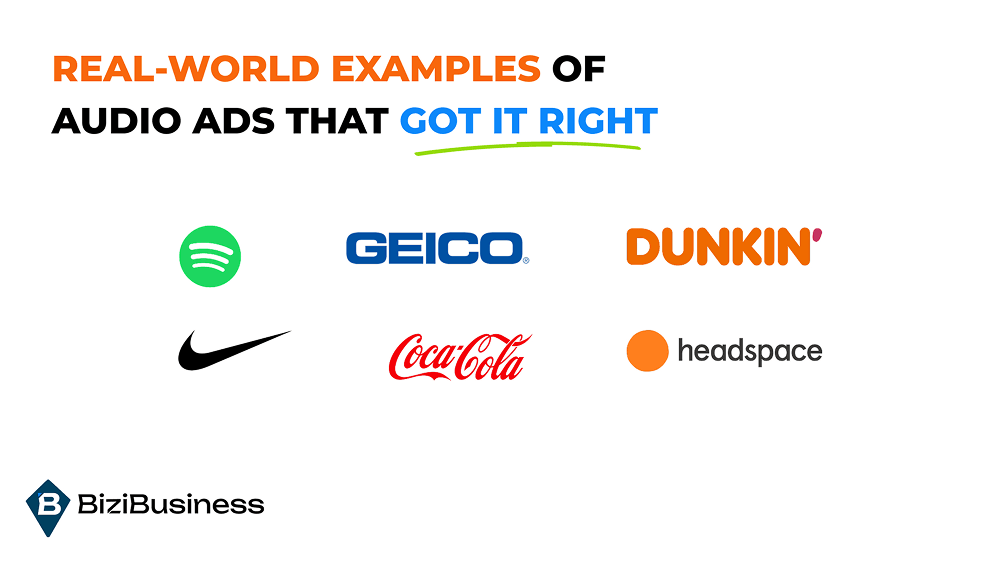
Great audio ads don’t just happen—they’re crafted with careful attention to tone, relevance, and context.
By analyzing successful examples, we can understand what makes an ad stick in the listener’s mind and inspire them to take action.
1. Spotify: “Let the Song Play” Campaign
Spotify ran an ad campaign encouraging users to upgrade to Premium to skip ads and listen uninterrupted.
The ad humorously acknowledged the inconvenience of ads while promoting the very solution it offered.
Why It Worked:
- Self-Aware Humor: Acknowledging that ads can be annoying made the message more relatable.
- Clear CTA: Directly encouraged users to upgrade for an ad-free experience.
- Platform Relevance: The message was tailored specifically to Spotify listeners.
Key Takeaway:
Being transparent and humorous about your product’s value can resonate more than just listing features.
By directly addressing the listener’s frustration, Spotify positioned itself as the solution.
2. Geico: “Surprising News” Radio Ad
Geico, known for its quirky ads, created an audio spot that started with a news bulletin sound effect.
The ad playfully reported that Geico could save listeners money, delivered in a newscaster’s serious tone.
Why It Worked:
- Sound Design: The news bulletin sound immediately captured attention.
- Tone Contrast: The combination of a serious tone with a lighthearted message created unexpected humor.
- Catchy Tagline: Reinforced their well-known message—“15 minutes could save you 15% or more on car insurance.”
Key Takeaway:
Use contrasting tones to surprise listeners and keep them engaged.
Unexpected juxtapositions can make a familiar message feel fresh and interesting.
3. Dunkin’: “Morning Routine” Podcast Ad
Dunkin’ created a podcast ad that blended seamlessly with morning shows by discussing the importance of starting the day right.
The ad was voiced by the podcast host, making it feel like a personal recommendation rather than a scripted message.
Why It Worked:
- Host-Read Format: Leveraged the host’s established relationship with listeners.
- Context-Aware: Fit perfectly within a morning routine podcast, making it feel natural.
- Lifestyle Appeal: Focused on how Dunkin’ helps listeners start their day positively.
Key Takeaway:
Use host-read ads to build credibility and connect your product to the audience’s daily routine.
When the ad feels like friendly advice, it’s much more likely to resonate.
4. Nike: “Just Do It” Inspirational Audio Ad
Nike released an audio ad focused on motivation and personal growth.
The ad featured a calm, confident voice encouraging listeners to push through challenges and keep striving—perfect for workout playlists.
Why It Worked:
- Emotional Appeal: Tapped into feelings of motivation and perseverance.
- Targeted Context: Placed on fitness podcasts and workout playlists.
- Minimalist Sound Design: Kept the focus on the message without distracting effects.
Key Takeaway:
Align your audio ad’s tone and message with the emotional state of your audience.
Motivational content works best when listeners are already in a mindset for self-improvement.
5. Coca-Cola: “Share a Coke” Radio Ad
Coca-Cola’s audio ad featured real people calling out names, encouraging listeners to “Share a Coke with…” followed by common names.
The ad was part of the personalized “Share a Coke” campaign, and it created a sense of community and belonging.
Why It Worked:
- Personalization: Hearing one’s name creates a personal connection.
- Community Focus: Reinforced the idea of sharing and togetherness.
- Catchy and Fun: Made listeners feel part of a larger social experience.
Key Takeaway:
Personal touches in audio ads make them feel more relevant and relatable.
When listeners feel directly addressed, they’re more likely to remember and engage.
6. Headspace: “Take a Breath” Smart Speaker Ad
Headspace created an interactive ad for smart speakers, prompting listeners to take a deep breath and start a guided meditation.
The ad was short, soothing, and invited users to say, “Alexa, open Headspace.”
Why It Worked:
- Interactivity: Encouraged users to respond directly.
- Calming Tone: Matched the brand’s focus on mindfulness and relaxation.
- Voice Command Integration: Made it easy to take action immediately.
Key Takeaway:
Interactive ads work well on smart speakers because they make use of voice-activated responses.
When the CTA feels like a natural extension of the ad, users are more likely to follow through.
Creating Audio Ads That Resonate
Great audio ads don’t feel like interruptions—they feel like part of the experience.
By prioritizing authenticity, personalization, and relevance, your ads will not only be heard but also remembered.
The goal is to make listeners think, “Hey, that actually sounds useful”—not just hit the skip button.
Now it’s your turn.
Apply these strategies, experiment with different formats, and create audio ads that truly connect with your audience.
With the right approach, you can turn passive listeners into active customers.
Subscribe to Newsletter
Unlock your creativity and stay up to date on marketing tips
